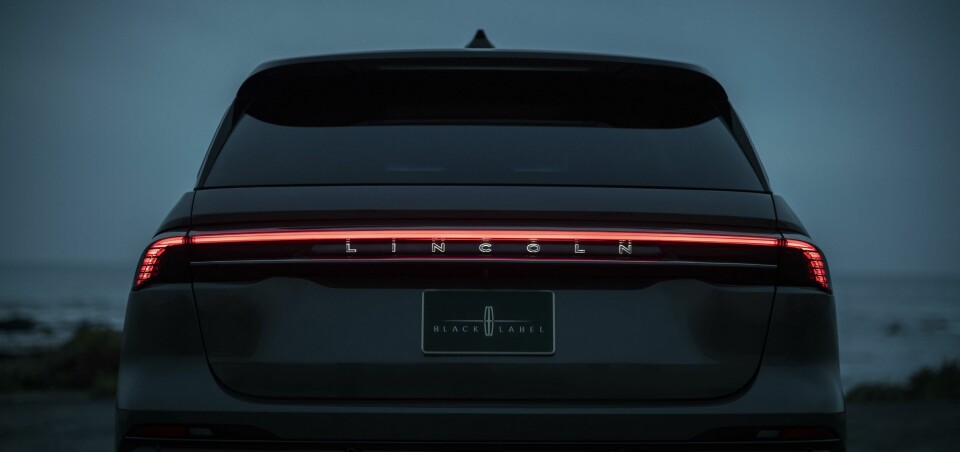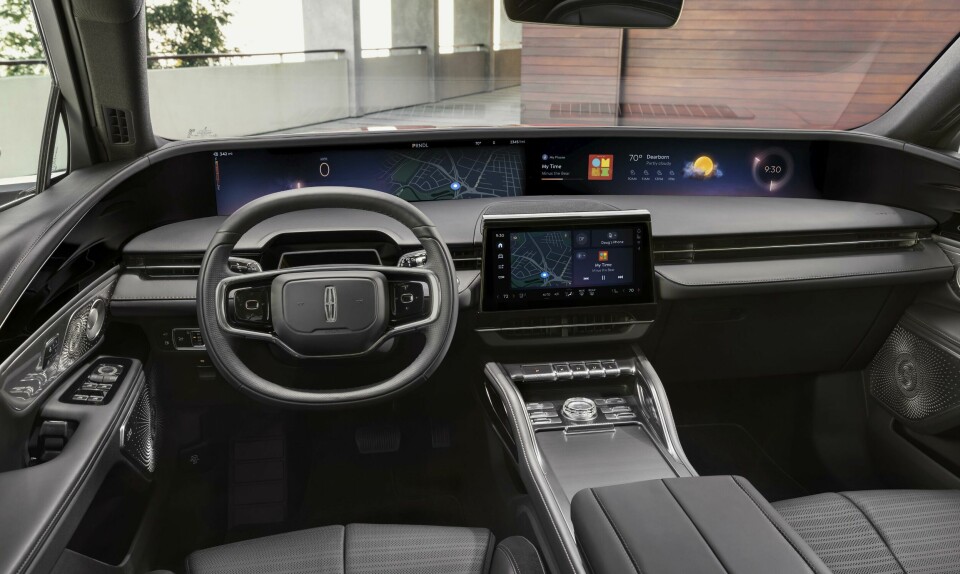
Lincoln: Nautilus SUV shows next-level design language and interior execution
Ahead of its reveal in New York City, North American correspondent Laura Burstein talked with Lincoln’s design team about bringing show car elements to production
This week Lincoln unveiled its newest production vehicle, the midsized Nautilus SUV that debuts a new design and next-generation interior.
Done at the company’s Irvine, California studio under the direction of Kemal Curic, the Nautilus design was done in parallel with the Zephyr sedan we saw last year and shares many of the same design elements. But unlike that vehicle, which was made exclusively for the Chinese market, the Nautilus will bring many of the Zephyr’s elements, including an expansive display and a younger aesthetic, to America and beyond.
Lincoln is striving to gain more traction with younger buyers in the US, where it has traditionally appealed to an older demographic. “Our customers are evolving, so we as a brand need to evolve as well,” chief designer Earl Lucas told us at a private briefing ahead of the Nautilus reveal. Earlier this year, the company announced it was selling more vehicles in China than in its home country, with Chinese sales up 48 percent over the previous year. Sales in the U.S., meanwhile, dropped 18 percent for that same period.
When you get to the rear of the car, the wings are down, as if a bird was in flight
With so much competition coming from both new and established brands, the Lincoln design team is betting on its next-generation design language, dubbed Quiet flight 2.0, to reach beyond existing customers. “The tenets are still the same — beauty, gliding, human, and sanctuary,” Lucas explains, “but with this vehicle and other vehicles to come, they will be more athletic, more dynamic, and more youthful. All the shape language you see is going to be more progressive that suggests we’re pushing the brand forward.”
For the Nautilus, designers leaned heavily on a bird motif, with a new front face framed by a lighting signature that looks like wings. A new welcome sequence illuminates the centre Lincoln star logo and extends outward into the headlamps, underscoring Lincoln’s affinity for horizontal lines. The body side gets cleaner, more sculptural surfacing inspired by aircraft, along with door handles integrated into the beltline. Lucas points out the main character line, which runs in a “flight path” down the side of the car, terminating in the rear. “So you have the wings up in front, and when you get to the rear of the car, the wings are down, as if a bird was in flight.”
The tech really leads the product now
Rear windows are etched with the same bird-wing pattered echoed in graphics on the rear windows, as well as in the tail lamp signature, connected by a single thin light bar that again emphasizes the Lincoln’s horizontality. Top-of-the-line Black Label models get lots of chrome, while a new Jet Appearance package lends a sportier look with two-tone paint and black accents around the vehicle, as well as a unique black 22-inch wheels with aerodynamic inserts. The latest Nautilus is also two inches longer and wider, respectively, making it the largest in its segment, and sitting below the brand’s Aviator model.

The Nautilus interior is the most significant update for Lincoln, and the result of the design team’s shift to an “inside-out” approach, where interior and user experience comes ahead of exterior design. “The tech really leads the product now,” Lincoln global design director Kemal Curic told us. “You can see the car is not as analogues as it used to be, it’s much more digital.” The centrepiece is the pillar-to-pillar 48-inch horizontal display, comprised of two equally sized screens, which sit high on the instrument panel and wrap around into the doors. Winglike graphics in the door panels echo those on the car’s exterior.
The Nautilus interior keeps some hard buttons
“I really like this idea of the wraparound screen, it’s like an iMax theater,” Kuric says. He also points out the new steering wheel design, which is flat on top to help increase screen visibility. Control pads on either side wheel use a special coating similar to the Apple TV remote. “We obsessed about the feel and touch of these buttons,” he says.
Still, the Nautilus interior keeps some hard buttons, including the brand’s signature “piano key” shifter, with a tweaked design inspired by brand’s L-100 concept shown last August at Monterey Car Week. Also debuting on the Nautilus is an immersive program dubbed Lincoln Rejuvenate — a concept we saw last year with the Star show car (and not dissimilar to Mercedes’ Energising comfort program), which combines lighting, sound, and scent to create specific moods.
Colour and trim options include a new Redwood theme for Black Label models, done in a rich burgundy with American walnut trim, as well as a Black Onyx colourway for the Jet Appearance Package that uses copper stitching and glints of copper in the aluminium applique. The interior also features crystal-cut glass elements as well as extensive ambient lighting. “It was number one for us to focus on quality in this car,” Kuric said. “Even the air vents, how they come together, the interaction between the screen to screen execution when you close the door.”
But for all the efforts in the design studio, time will tell whether the success of the Nautilus could be hampered by its ICE powertrains. When it arrives in U.S. dealerships in early 2024, the new Nautilus will come equipped with either a carryover 2.0-litre turbocharged 4-cylinder engine, or a hybrid variant that uses the turbocharged 4-cylinder with a 100kW electric motor. It’s slow progress for a brand that’s promised it will go all electric by 2030, a future foretold by its Star and L-100 concepts shown last year.
Parent company Ford, meanwhile, is already into its third model year with the Mach-E EV crossover, and has already debuted its F-150 Lightning pickup. Still, the new design language is a step in the right direction, and just one piece of the puzzle as Lincoln updates its lineup over the next few years.





































